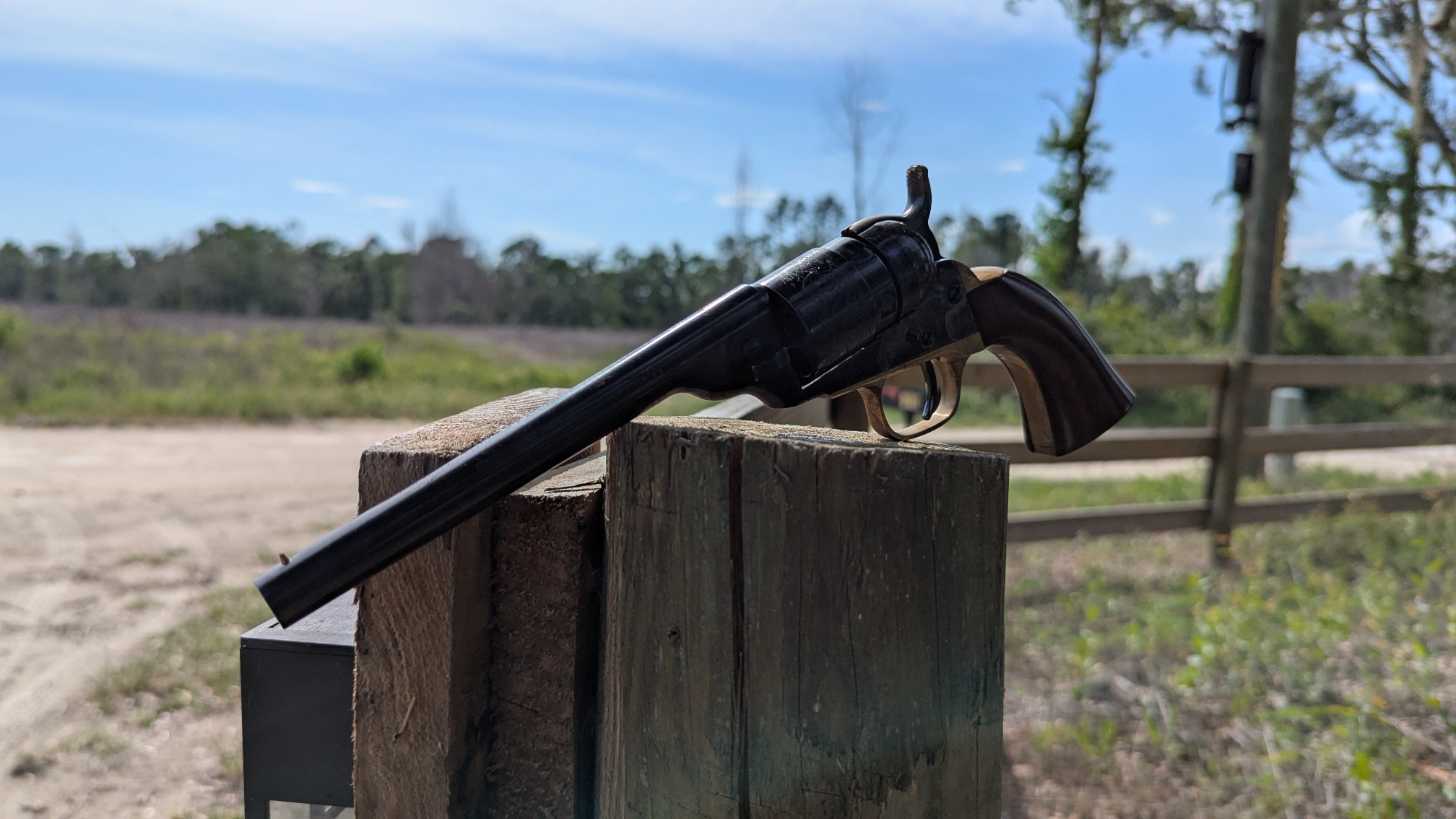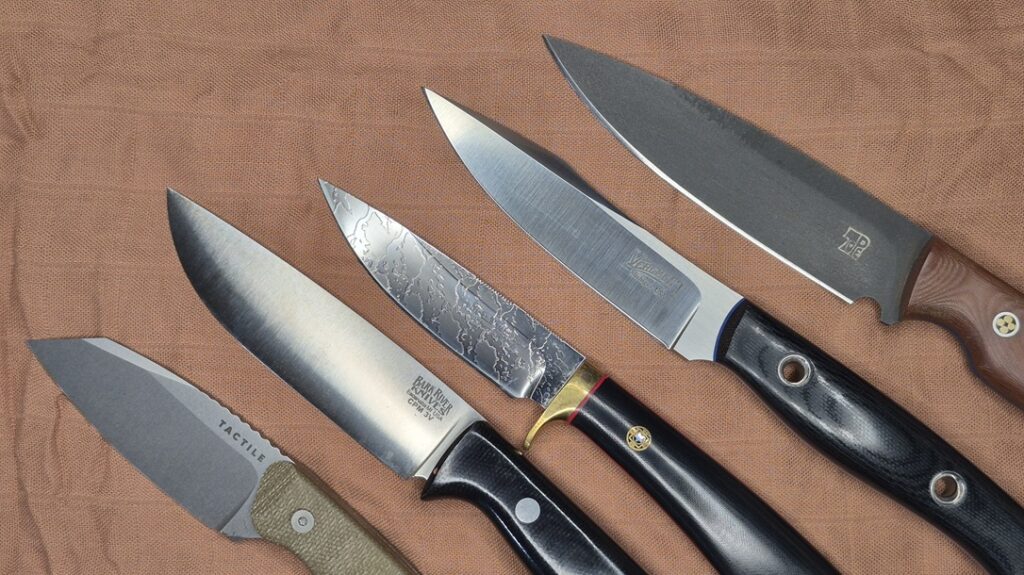I have a bad habit of just buying weird guns for the sake of their weirdness. I try to keep this on the cheap side, but occasionally you run across something like the Cimarron 1862 Pocket Navy conversion. Then, you simply have to bust out a few hundred dollars for something that just makes you smile. This Cimarron 1862 Pocket Navy conversion isn’t your usual conversion; it chambers the .380 ACP cartridge.

The Cimarron 1862 Pocket Navy
The .380 ACP is known for its use in mouse guns, so its journey into a revolver is a bit of a long story. Original Pocket Navy revolvers were .36 caliber percussion cap revolvers. If you’re going to make a cartridge conversion of these .36 caliber guns, what’s your approach? If you want to maintain the open-top design, you risk too much pressure, especially when trying to keep things small.
Advertisement — Continue Reading Below
The .380 ACP fits this need perfectly. Its low pressure is safe for an open-top revolver, and it keeps the gun’s size consistent with the original Pocket Navy revolvers.
What’s the Point?
You could opt for an obscure and hard-to-find .38 S&W or even a .32 S&W Long. While that would be cool, it limits you to revolver calibers that are often scarce. The .380 ACP, however, is the right size and pressure, plus it’s common and affordable. This lets you plink with the Cimarron 1862 Pocket Navy without breaking the bank.

Advertisement — Continue Reading Below
As far as I can tell, this gun could work for certain cowboy shoots, like those organized by the Single Action Shooting Society. It’s fun to shoot, cheap to shoot, and fits that niche competition role well. For me, it’s just weird and cool. I enjoy single-action revolvers, but often hate the price of most revolver calibers. The .380 ACP makes shooting this one both fun and affordable.
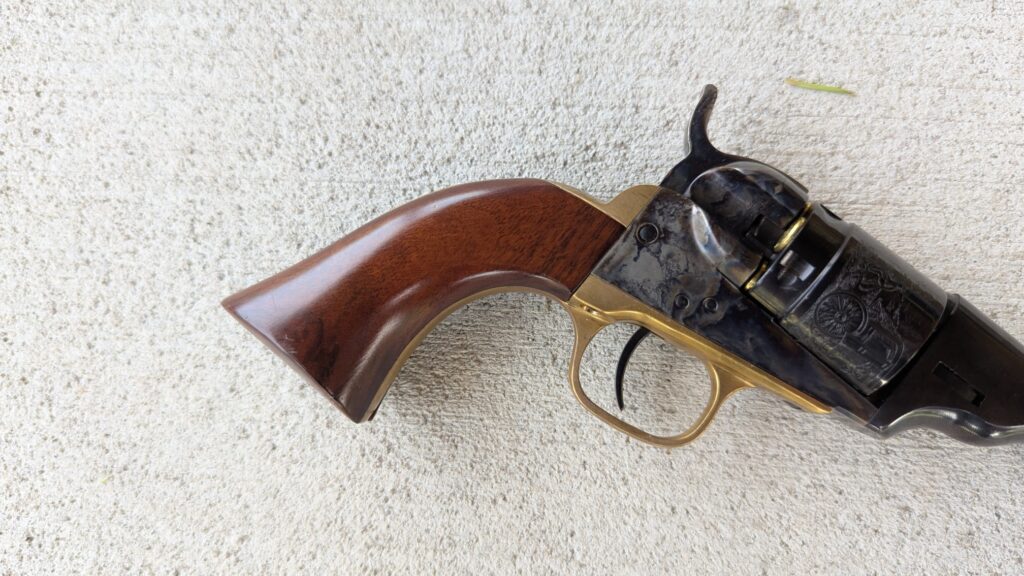
Since we’re discussing the point, you might wonder why this little gun has a six-inch barrel. It seems that Cimarron originally intended to use shorter barrels, somewhere in the 3.75 to 4-inch variety. Unfortunately, the BATFE didn’t approve it. I’d assume this was due to the points system for the Gun Control Act.
Advertisement — Continue Reading Below
Shooting the 1862 Pocket Navy
Speaking of shooting the 1862 Pocket Navy, let’s get into it. The gun doesn’t use moon clips because it doesn’t eject like a double-action revolver. Instead, the rounds headspace on the raised rims in the chamber. It’s a very simple design that works well for a single-action revolver. There’s no loading gate, but the rounds don’t sit directly aligned with the loading area unless the hammer is at half cock, which prevents them from sliding out of the cylinder.
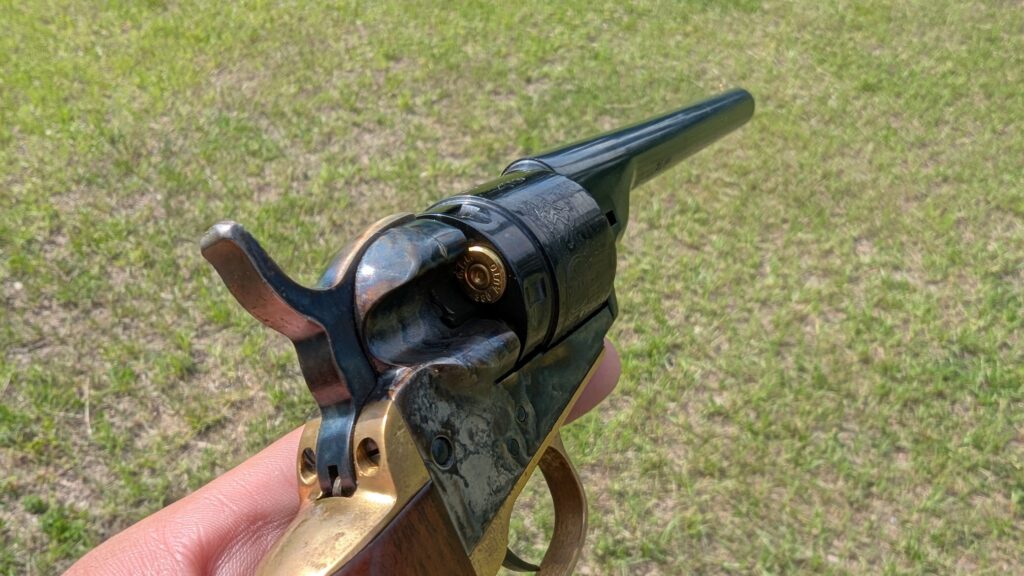
There’s also no ejector rod, so you’ll need to bring a cleaning rod. You’ll have to press out the spent casings. The brass swells a little, so sometimes the rounds get stuck. If you shoot any steel-case .380, this problem will be even worse.
Advertisement — Continue Reading Below
The sights are very rudimentary, seemingly original to the old Colt designs. The 1862 Pocket Navy has a gold bead front sight, and the rear sight is part of the hammer. When you cock the hammer, it aligns with the gold bead. Sadly, the gun isn’t all that accurate, even with its long sight radius.
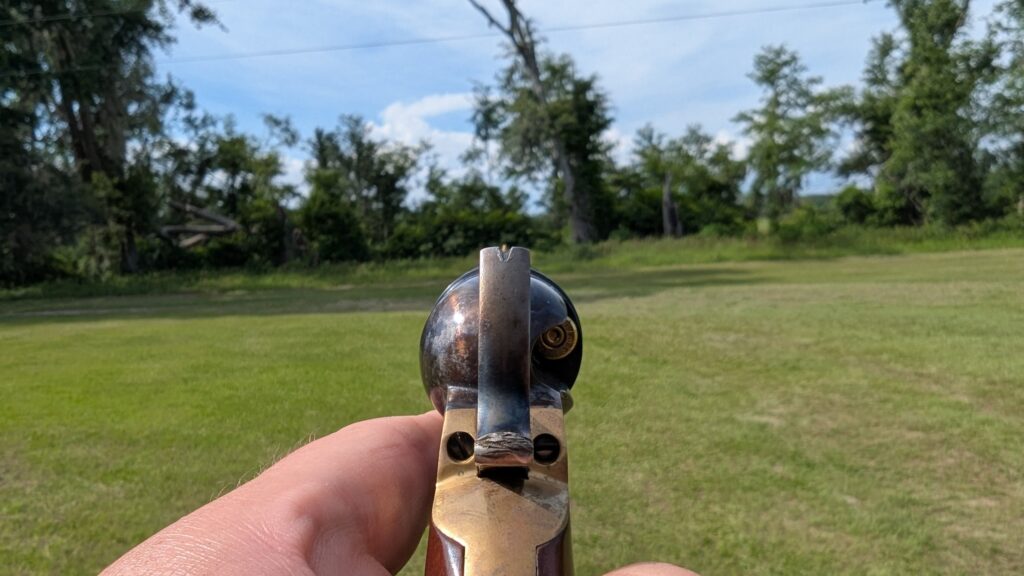
It can put all five rounds into a four to five-inch group at 15 yards. I would expect much better accuracy from such a long sight radius, but that’s simply not the case. It has everything going for it—a light and crisp single-action trigger, the aforementioned sight radius, and a fixed barrel design. Yet, I can produce much better groups with other firearms.
Advertisement — Continue Reading Below
It’s still a ton of fun to shoot, and you have to assume a one-handed shooting position with a bladed shooting style, like you were some sort of Wild Bill.
Worth the Squeeze
The gun has mild recoil, but it’s more than you’d expect from a .380 ACP. The little grip doesn’t give you much to hold onto, and when the gun recoils, the trigger guard will hit your hand. It’s not terrible or painful, but it’s mildly annoying. Going through a few cylinders quickly demonstrates just how annoying it can be.

Advertisement — Continue Reading Below
The 1862 Pocket Navy is as reliable as you’d expect it to be. It’s a revolver firing a centerfire round with a single-action trigger. It’s going to work unless something serious breaks. It does get a little annoying having to pop out every case with a punch rod, so I never shoot this thing for high round counts.
I don’t compete in SASS or any cowboy-style competition, and I don’t have any real purpose for this gun. It’s not really good at anything specific. It’s fun, and it’s weird, but if fun and weird don’t appeal to you, the 1862 Pocket Navy might not be for you.
Advertisement — Continue Reading Below
